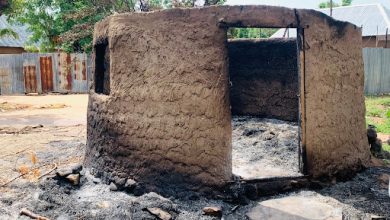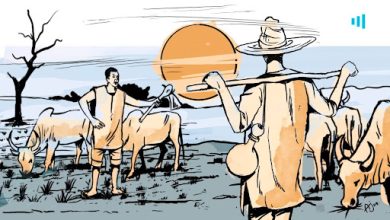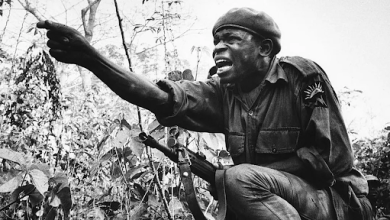What Percentage Of Terror Attacks Make It To The News? We Finally Have An Idea
In 2020, only 4 per cent of terrorist attacks, 60 per cent of civilian fatalities, and 36 per cent of abductions in Borno State were reported by media organisations.

On a daily basis, there are reports of violent attacks across Nigeria in the media. And even though these reports do not capture the full picture, they remain the primary source of information about insecurity. As far as terrorist attacks go, it was difficult, until recently, to say just how comprehensively journalists have been able to report the incidents.
Two major publicly available data banks contain statistical information about violent incidents recorded in the country: the Nigeria Security Tracker (NST) operated by the Council for Foreign Relations since 2011 and the Armed Conflict Location and Event Data Project (ACLED), a non-profit based in the United States.
Both often cited conflict-mapping platforms rely heavily on news reports and, occasionally, reports of attacks shared on social media (Twitter especially). As a result, there is a large blind spot involving events that do not make it to the headlines.
This has not been helped by the unwillingness of Nigerian security agencies to disclose independently collected data to the public. The National Bureau of Statistics released nationwide crime statistics for 2016 and 2017, but these reports do not distinguish terrorist attacks from such crimes as armed robbery, arson, assault, kidnapping, murder, and suicide.
We are, however, starting to better grasp the scale of insecurity in the country, especially as it pertains to the Boko Haram insurgency. According to a security report exclusively obtained by HumAngle, there were 3,156 “major” attacks by Boko Haram and the Islamic State’s West Africa Province (ISWAP) in Borno State in 2020 alone.
These incidents ranged from attacks on security formations and communities to mounting of roadblocks, ambushes, abductions, and the use of rockets and improvised explosive devices. They also ranged from numbering 168 in February to as high as 348 in August.
Throughout the period, 2,431 civilian casualties were recorded (likely limited to those who sustained injuries), 1,021 civilians were killed, and 842 others were abducted in Borno State.
“The analysis is quite daunting (not encouraging) because past gains seem to be eroded,” observed the security agency that collated the data.
“Boko Haram suddenly became more daring and confident, which calls for different approaches in 2021. The localisation and location of BHT [Boko Haram Terrorist] attacks per Local Government Area should be seen by newly elected local government councils as a pointer to evolve ‘Community Defence Architecture’ to assist in beefing up security.”
By analysing data from the Nigeria Security Tracker between January 1 and December 31, 2020, HumAngle found that 1,867 violent attacks were reported throughout the country. Out of this number, 246 (13 per cent) were reports about Borno State.
We further trimmed these reports down to those that involved attacks by Boko Haram and ISWAP fighters. About half of them (124) fell into this category while the rest (122) were mostly reports about military onslaughts and airstrikes.
What this means is that only 3.93 per cent of Boko Haram attacks in Borno State in 2020 were reported by credible news organisations in the country. In other words, 124 out of 3,156.
According to the NST, 615 civilian fatalities were recorded in the state last year and 300 people were victims of abduction. This pales in comparison to the figures obtained by HumAngle as compiled by one of the security agencies in the state. The latter source states that 1,021 civilians were killed and 842 others were kidnapped.
That is to say 60 per cent of the civilian fatalities were reported and only 35.6 per cent of the abductions. Consequently, attacks with higher death tolls are more likely to make it to the pages of newspapers.
A similar trend can be noticed when the official data is compared with real-time data collected by ACLED, which covers January 1 to December 21, 2020. A total of 218 terrorist attacks were reported in the period and a death toll of 1,020 was recorded. The death toll, however, includes both civilian and military fatalities.
If the ACLED figure is used, it means the media coverage of terrorist attacks in the state was slightly higher at 6.9 per cent.
It is expected that, for various reasons, the levels of reporting will be different from state to state and from one form of insecurity to another. For example, terrorist attacks outside of the northeast are likely to get more media attention or attacks close to the state capital compared to those in remote communities.
One of the implications of this discrepancy is the chance that not only have media organisations been underreporting the incidents of attacks but also the civilian death tolls.

One of the most cited figures of fatalities related to the insurgency is that of the Council of Foreign Relations (CFR). According to the organisation, over 39,800 people have been killed since May 2011 and about half of them were civilians.
Between June 2011 and June 2018, NST documented 2,021 attacks involving members of Boko Haram and which led to the death of 37,530 people. Within the same period, ACLED recorded 3,346 incidents where 34,261 people were killed.
Going by the recently obtained figures, however, these many incidents were recorded in just one year (as against seven) and in only one state of the country (as against 37).
NST data shows that, in 2020, at least 9,694 lives were lost to insecurity across Nigeria while 2,879 people were victims of kidnapping. Among the lives lost, 2,716 were civilians and 875 were security operatives.
Government spokespersons Femi Adesina and Lai Mohammed have, however, continued to insist that the country has made “tremendous progress” in its fight against banditry and terrorism and that security has improved in the northern region.
But then, President Muhammadu Buhari in his New Year nationwide address acknowledged 2020 was a tough year in which many lives were lost.
“Our administration is fully aware of the responsibility we have to protect the lives and property of all Nigerians, and we will not relent in learning and adapting to changing threats to our national security and civic wellbeing,” he assured.
Nigeria has consistently been ranked the third most terrorist country in the world by the Institute for Economics and Peace (IEP) since 2015 when Buhari became president. Asides the tens of thousands killed, the Boko Haram insurgency has led to the displacement of over two million Nigerians while millions more grapple with food insecurity.
Support Our Journalism
There are millions of ordinary people affected by conflict in Africa whose stories are missing in the mainstream media. HumAngle is determined to tell those challenging and under-reported stories, hoping that the people impacted by these conflicts will find the safety and security they deserve.
To ensure that we continue to provide public service coverage, we have a small favour to ask you. We want you to be part of our journalistic endeavour by contributing a token to us.
Your donation will further promote a robust, free, and independent media.
Donate HereStay Closer To The Stories That Matter





